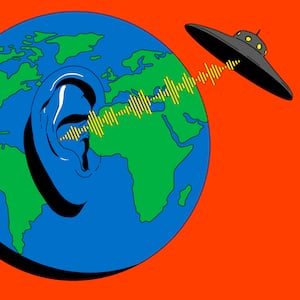Though the James Webb Space Telescope is hogging most of the astronomy spotlight these days (and for good reason), it’s far from the only tool scientists are using to discover hidden gems in the vast emptiness of space. Case in point: astronomers at the University of Birmingham have just spotted a pair of distant “super-Earth” planets orbiting a dim red dwarf star about 100 light-years from Earth.
And one of those planets has the potential to be one of the most habitable extraterrestrial worlds we’ve ever found.
The host star, LP 890-9, has been pretty well-studied before. In fact, one of its planets, LP-890-9b, was already identified by NASA’s Transiting Exoplanet Survey Satellite (TESS) in orbit. Follow-up observations using the ground-based SPECULOOS telescopes in Chile, tallying more than 600 hours, led to the discovery of its much more intriguing sibling: SPECULOOS-2c (formerly LP 890-9c). The new findings are detailed in a new paper published in Astronomy & Astrophysics.
ADVERTISEMENT
Why is SPECULOOS-2c such a big deal? It sits smack in the middle of LP 890-9’s habitable zone—the region around the star where temperatures are thought to be moderate enough to allow for liquid water to remain stable on the surface. And where there is water, there’s the potential for life to thrive.
In fact, the authors of the study think SPECULOOS-2c might just be the second most habitable planet on record, following TRAPPIST-1e (40 light-years from Earth).
That doesn’t mean SPECULOOS-2c is guaranteed to host life—or even have the ability to host life. It has some weird quirks that make it quite different from Earth. For one, the planet’s radius is about 40 percent larger than Earth’s (hence the “super-Earth” moniker). It’s also tidally locked, which means one side is permanently facing its host star. And we also have no idea whether it has an atmosphere that could keep any alien critters on the surface feeling warm and fuzzy.
But none of these traits are deal breakers for the ability to host life. A tool like the Webb telescope could be capable of figuring out whether an atmosphere on SPECULOOS-2c exists. The new findings are sure to encourage NASA and others to devote some time to sussing the question out.







